When you crave a little comfort, try my nutty and nutritious Kinako Milk recipe. You can make this quick, simple beverage with just toasty roasted soybean flour and your choice of milk and sweetener. It‘s delicious served hot or cold any time of year. {Vegan Adaptable}
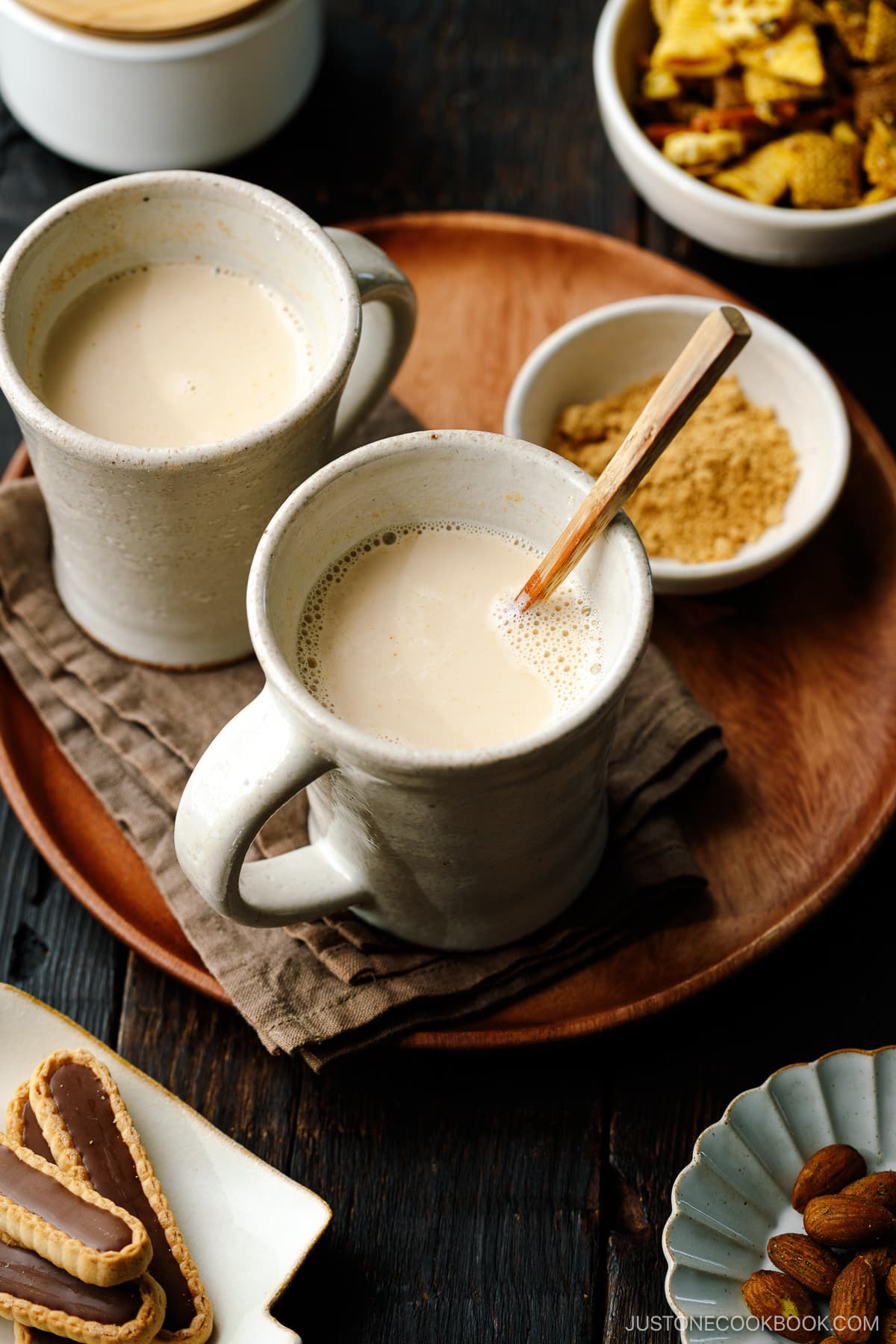
After Japanese New Year, one ingredient that tends to stay in the pantry forever is kinako, or roasted Japanese soybean flour. Today, I want to share a delicious and nutritious way to use your leftover kinako by making Kinako Milk! You can enjoy this beverage all-year round, whether as Hot Kinako Milk (hot soybean powdered milk) or Cold Kinako Milk (Iced soybean powdered milk).
What is Kinako?
Kinako (きな粉) is a roasted soybean powder widely used in Japanese savory and sweet recipes. The nutty powder is mixed with lightly blanched or simmered vegetables or sprinkled over traditional Japanese sweets, such as Daifuku, Warabi Mochi, Dango, and Ohagi. One of the most iconic ways to serve this ingredient is mochi coated with kinako during Japanese New Year.
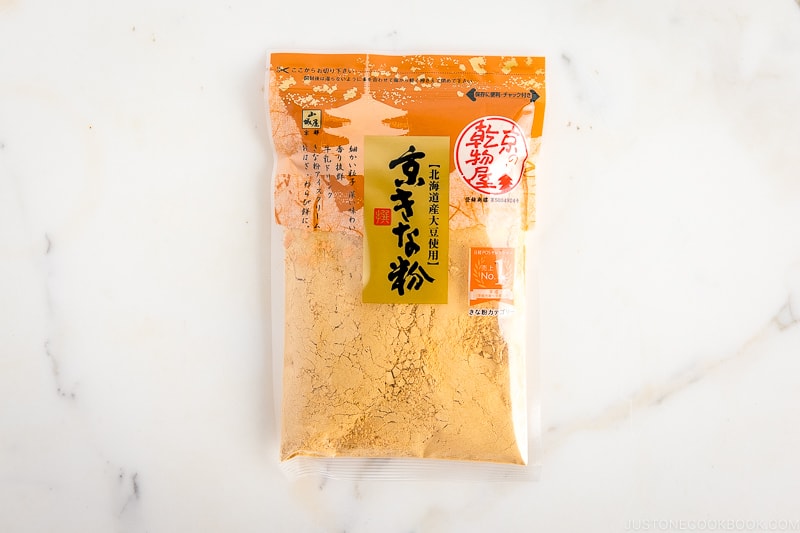
Kinako has a nutty and earthy taste without too much of the soybean taste and aroma. Some say it’s similar to roasted peanuts. It’s slightly sweet and is typically mixed with sugar when used in wagashi.
Depending on the brand, the skin of the soybeans may or may not be removed in the manufacturing process.
You can also find kinako made from black soybeans (黒豆きなこ), where you can see black specks in the soybean flour. It tends to be slightly more expensive but has more nutrients than regular kinako.
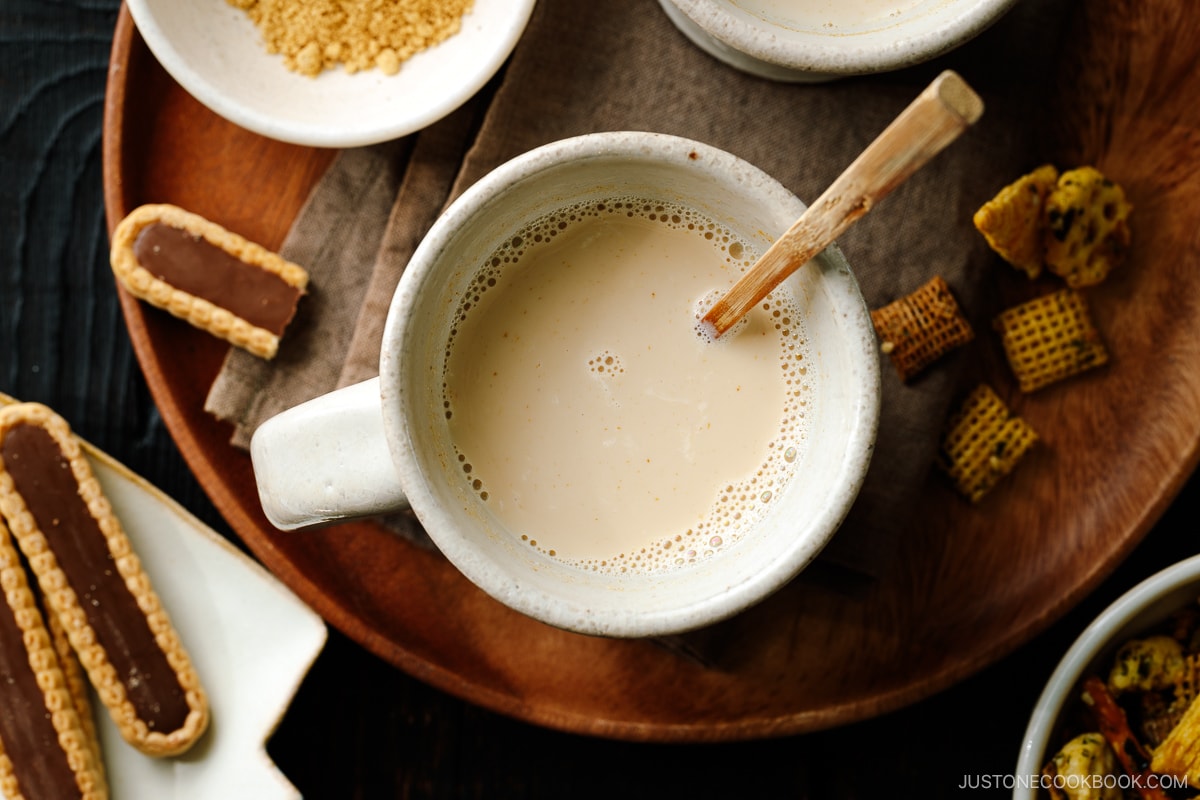
Ingredients for Kinako Milk
All you need is just three ingredients.
- Kinako (roasted soybean flour)
- Milk—I used 2% reduced-fat milk; feel free to use any type of milk, including plant-based milk.
- Sugar—It’s optional, but I recommend adding even a little bit to bring out the natural sweetness of the kinako. I also encourage interchangeably using other sweeteners like honey, maple syrupor kuromitsu. All great choices here!
How to Make Kinako Milk
I like making this drink in a cup, one serving at a time. Of course, you can use a saucepan to warm the milk if you don’t have a microwave. But to me, it’s one less thing to wash if I use the microwave method. Here’s how I make it.
- Add the kinako, sugar, and one-third (1/3) of the cold milk in a mug cup.
- Using a spoon or whisk, mix the mixture until the kinako is completely dissolved.
- Add the rest of the milk and mix again. Now your Cold Kinako Milk is ready to serve.
- For Hot Kinako Milkmicrowave (1000W) the kinako milk for 1 minute or until it’s hot.
- Stir and enjoy the hot kinako milk.
If you don’t have a microwavewarm up the milk in a saucepan on the stove, and mix in one-third (1/3) of the steamed milk with the kinako and sugar first before pouring the rest.
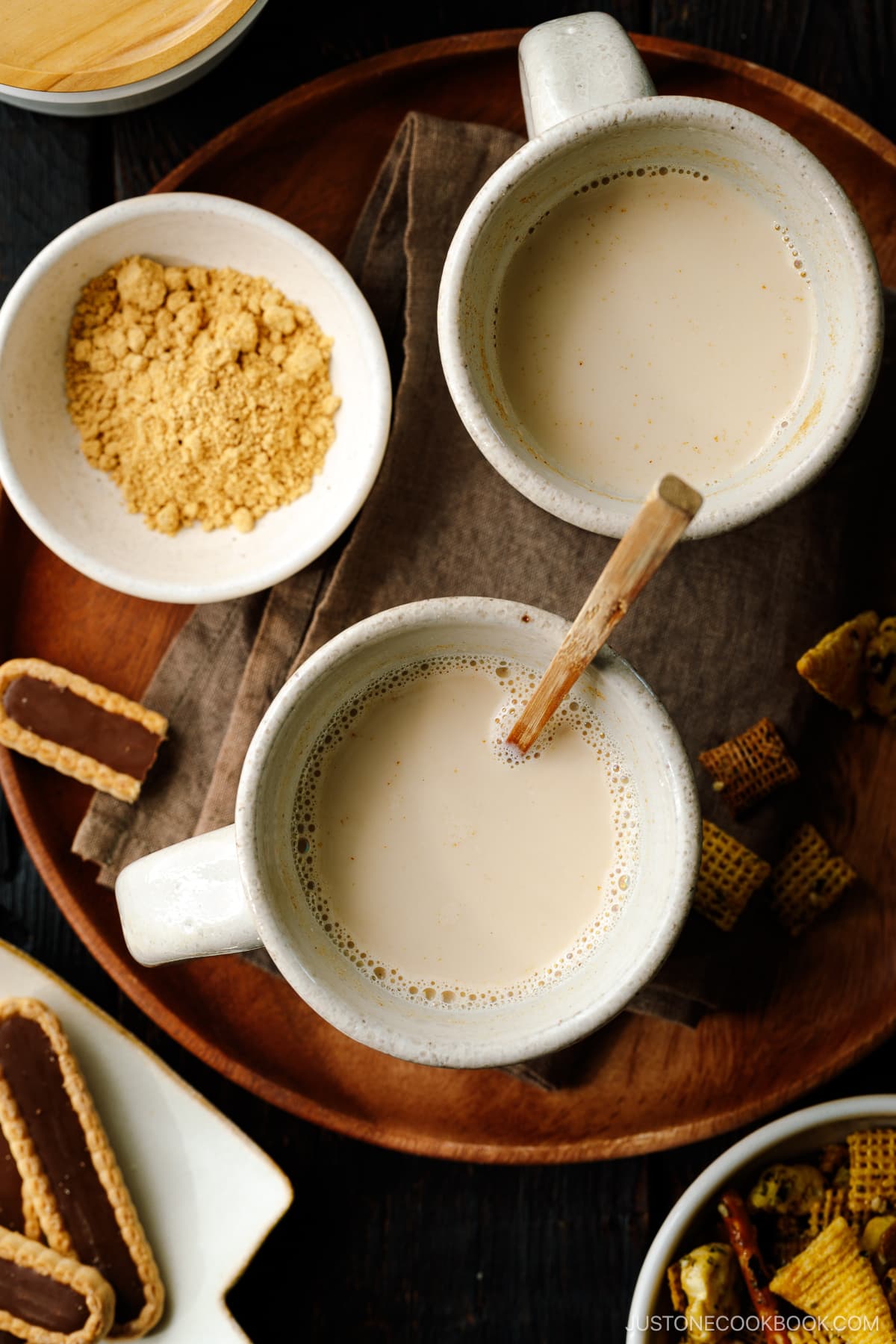
Recipe Tips
- Mix the kinako and a small amount of milk until the kinako is completely dissolved. Then, add the rest of the milk. This avoids lumps of kinako flour in the drink.
- Be careful not to overcook the milk in the microwave. After testing a few times, I know that microwaving 200–240 ml of just-out-of-fridge milk for one minute results in the perfect temperature. My microwave is 1000W.
- You can substitute the sugar with healthy, delicious alternatives such as honey, maple syrup, or kuromitsu. I sometimes swap the sweetener for fun to vary the flavor.
What to Serve with Kinako Milk
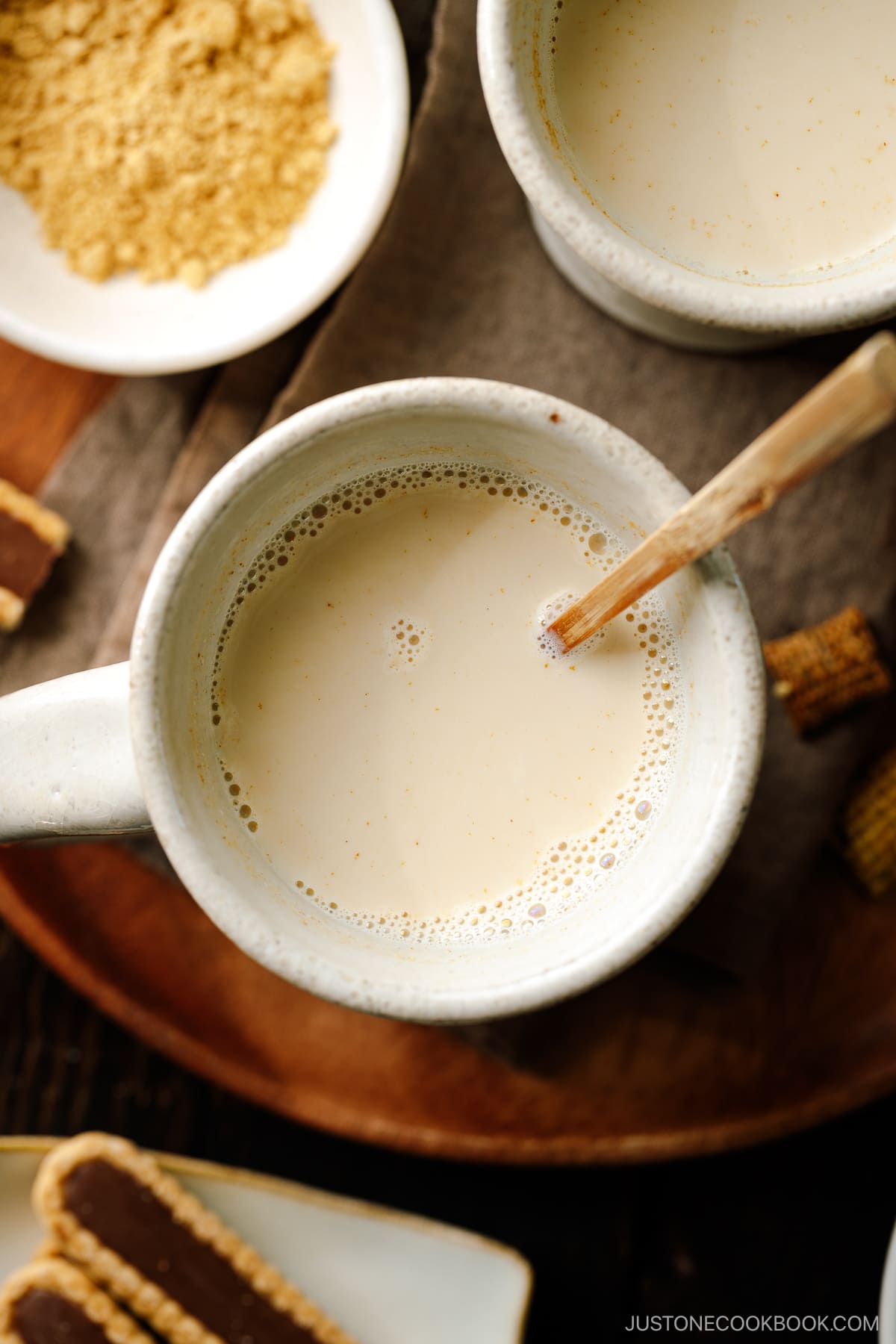
Health Benefits of Kinako
As a soybean product, kinako has all the health benefits of soybeans. For those who are curious, here are just some of the many benefits it provides:
- High in Protein: Kinako is an excellent source of plant-based protein. Protein is essential for muscle maintenance and repair and overall bodily functions.
- Dietary Fiber: It contains dietary fiber, which promotes digestive health, helps regulate blood sugar levels, and aids in maintaining a feeling of fullness.
- Nutrient Dense: Kinako contains B vitamins, particularly folate, and minerals such as calcium, iron, and magnesium. These nutrients are vital for overall health, bone strength, and energy production.
- Heart Health: The presence of soy isoflavones may contribute to heart health by helping to lower LDL (bad) cholesterol levels and reduce the risk of heart disease.
- Low Glycemic Index: It has a low glycemic index, which means it has a relatively minor impact on blood sugar levels.
- Bone Health: Kinako contains calcium and magnesium, essential for maintaining strong and healthy bones.
- Antioxidants: Antioxidants in soybeans can help protect cells from oxidative damage and reduce the risk of chronic diseases.
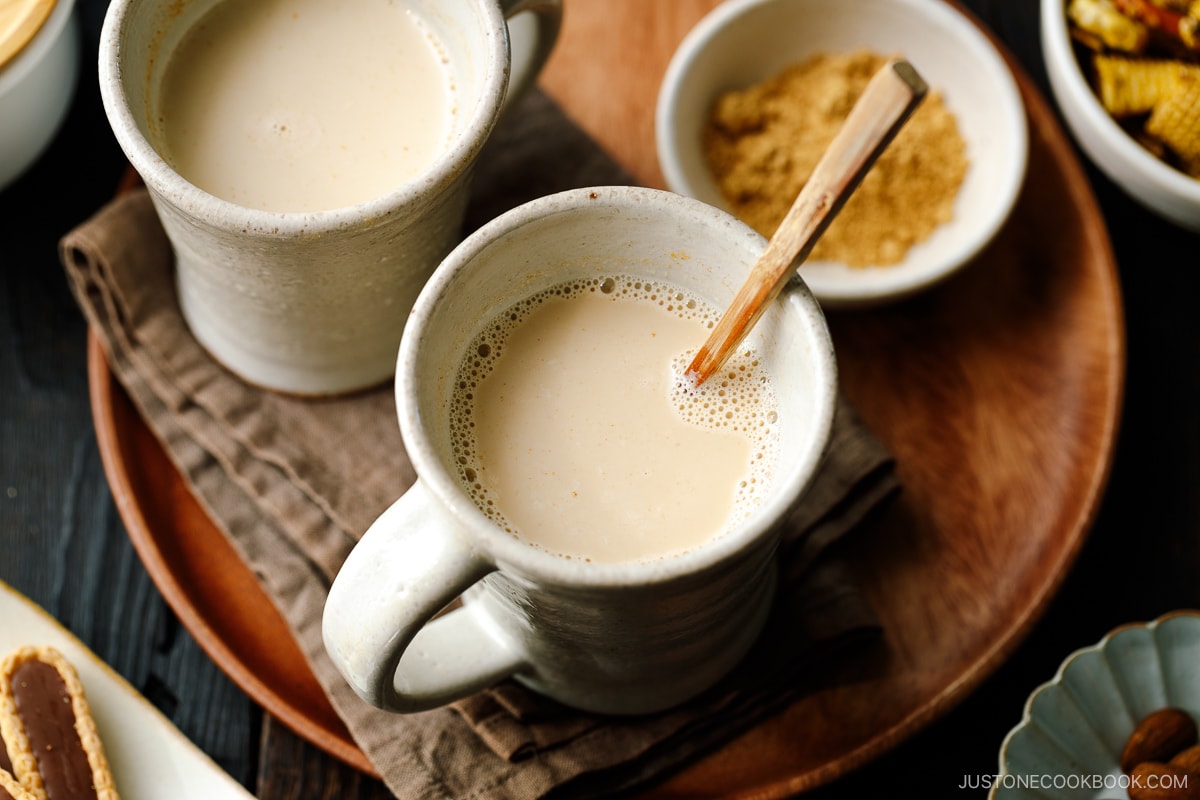
Wish to learn more about Japanese cooking? Sign up for our free newsletter to receive cooking tips & recipe updates! And stay in touch with me on Facebook, Pinterest, YouTubeand Instagram.
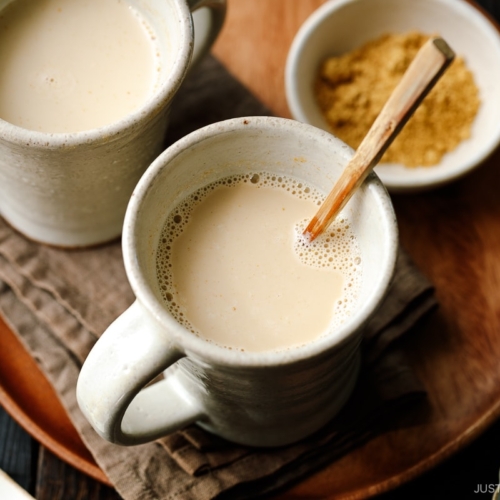
Ginako Milk
When you crave a little comfort, try my nutty and nutritious Kinako Milk recipe. You can make this quick, simple beverage with just toasty roasted soybean flour and your choice of milk and sweetener. It‘s delicious served hot or cold any time of year. {Vegan Adaptable}
Ingredients
Prevent your screen from going dark
Instructions
For the Kinako Milk
-
For one serving, Add 2 Tbsp kinako (roasted soybean flour) and 1 tsp sugar to a mug cup and mix.
-
Add ⅓ cup cold milk. Mix with a spoon or whisk until the kinako is completely dissolved. Tip: It‘s easier to dissolve the kinako in a small amount of liquid to avoid any lumps.
-
Add the remaining ⅔ cup milk and mix well. Enjoy your Cold Kinako Milk!
For Hot Kinako Milk
-
Microwave Method: Prepare the Ginako Milk above and heat it in the microwave for 1 minute (using out-of-fridge cold milk, 1000W). Mix well and enjoy!
-
Stovetop Method: Warm up 1 cup milk in a saucepan on the stove.
-
Meanwhile, add 2 Tbsp kinako (roasted soybean flour) and 1 tsp sugar (for one serving) to a mug cup and mix.
-
Once the milk is heated, add ⅓ cup hot milk to the mug cup. Mix until the kinako is completely dissolved.
-
Add the remaining ⅔ cup hot milk and mix well. Enjoy your Hot Kinako Milk!
©JustOneCookbook.com Content and photographs are copyright protected. Sharing of this recipe is both encouraged and appreciated. Copying and/or pasting full recipes to any website or social media is strictly prohibited. Please view my photo use policy here.

